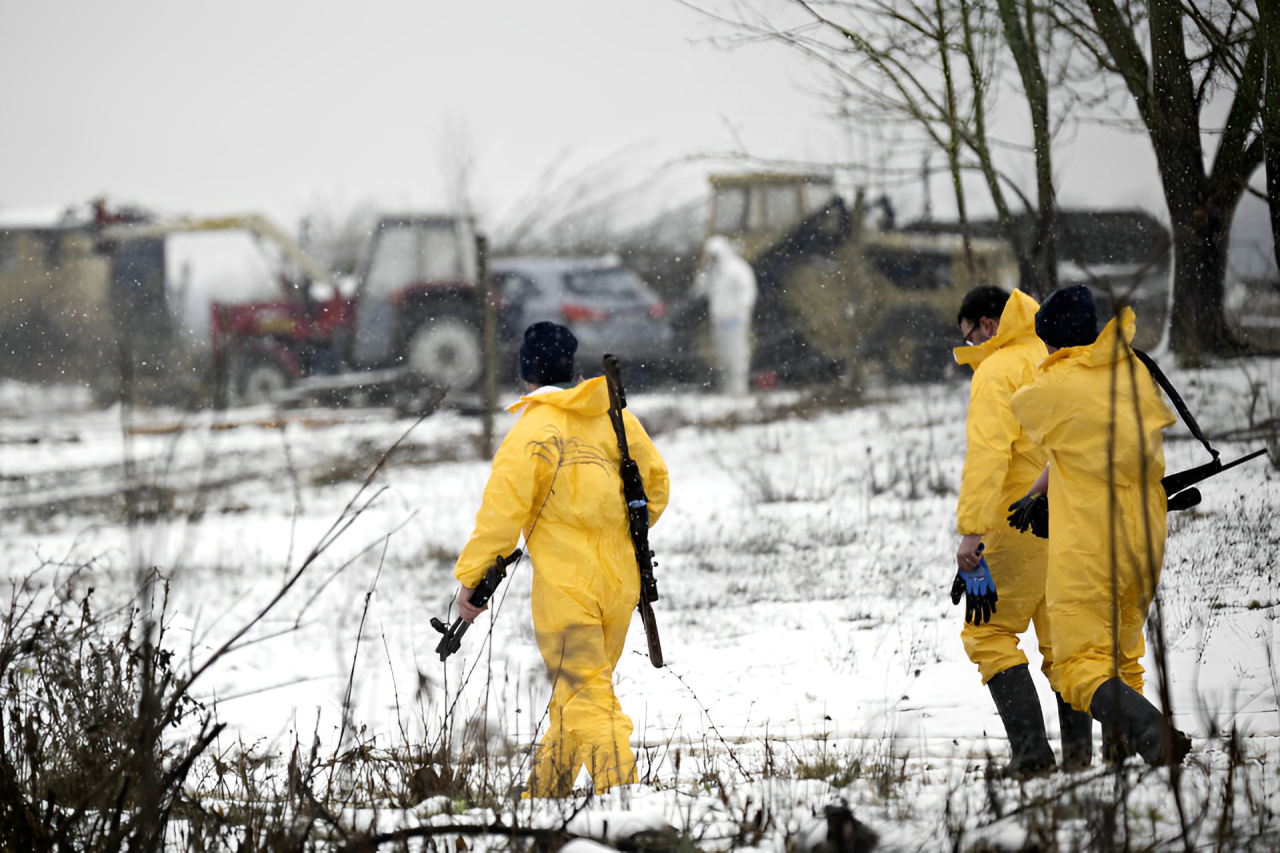BERLIN (AP) — A ban on animal transports has been enforced in Brandenburg, the region surrounding Berlin, after foot-and-mouth disease was detected in a herd of water buffalo just outside the capital. The outbreak is Germany’s first in over 35 years, raising concerns about the spread of the virus.
What Happened?
The outbreak was discovered on Friday when a farmer in Hoenow, a town on the outskirts of Berlin, found that three out of a 14-strong herd of water buffalo had died. Samples from one of the dead buffalo were sent to Germany’s National Animal Health Institute, which confirmed the presence of foot-and-mouth disease.
As a precautionary measure, the rest of the herd was slaughtered. However, authorities have not yet determined how the animals became infected.
The Response to the Outbreak
In response to the discovery, Brandenburg authorities implemented a 72-hour ban on the transport of cows, pigs, sheep, goats, camels, llamas, and other cloven-hoofed animals in the region. The ban took effect on Saturday, aiming to prevent the spread of the disease.
Berlin’s two major zoos — the Berlin Zoo and the Zoo Berlin Tierpark — have also closed to the public starting Saturday. While foot-and-mouth disease doesn’t pose a direct risk to humans, zoo management warned that the virus could be carried on clothing, shoes, or other items, potentially infecting the animals within the zoos.
Additionally, around 200 pigs at a nearby farm in Ahrensfelde, close to the area where the outbreak was first detected, will be slaughtered as a further precaution.
What Is Foot-and-Mouth Disease?
Foot-and-mouth disease is a highly contagious viral infection that primarily affects cloven-hoofed animals, including cattle, pigs, sheep, goats, and even camels and llamas.

The disease is characterized by symptoms such as fever, a loss of appetite, excessive drooling, and blisters on the animals’ mouths and hooves. While the disease typically doesn’t lead to death, it can make animals very sick and decrease their productivity, especially in farm animals.
The virus spreads quickly through contact between animals, but it can also be transmitted through the air. The disease can be spread by people who come into contact with infected animals or their surroundings. This includes farming equipment, vehicles, and even footwear.
Previous Outbreaks and Their Impact
This is the first foot-and-mouth disease outbreak in Germany since 1988, and the disease hasn’t been reported in Europe since 2011. These previous outbreaks led to extensive measures to control the spread of the virus, including the culling of infected animals and widespread restrictions on animal movements.
Given the disease’s rapid spread, authorities have been acting swiftly to limit its reach. The decision to close the zoos and enforce a transport ban reflects the seriousness with which the authorities are taking the outbreak. Though there is no direct human health risk, preventing the virus from spreading to more farms and animal facilities is crucial to avoid a broader epidemic.
How Is Foot-and-Mouth Disease Controlled?
To prevent the further spread of foot-and-mouth disease, strict biosecurity measures are necessary. These include:
- Quarantine: Infected farms or regions are isolated to prevent the movement of animals and contaminated items.
- Slaughtering infected animals: Infected animals are often culled to stop the virus from spreading further.
- Transport bans: Restrictions on the movement of livestock help contain the outbreak.
- Cleaning and disinfection: Areas where infected animals have been are thoroughly cleaned and disinfected to eliminate any traces of the virus.
- Monitoring and testing: Authorities continue to monitor and test animals in the affected area to identify potential cases early.
Conclusion
The outbreak of foot-and-mouth disease in Brandenburg is a reminder of how easily such viruses can spread between animals, especially in areas with dense farming activity. While the disease doesn’t affect humans directly, its rapid transmission can cause significant disruptions in agriculture and animal husbandry.
Authorities are taking all necessary steps to prevent further spread. Still, it will be crucial for the public and farm communities to cooperate in the efforts to keep the disease contained.
Disclaimer: This article has been meticulously fact-checked by our team to ensure accuracy and uphold transparency. We strive to deliver trustworthy and dependable content to our readers.







Leave a Comment